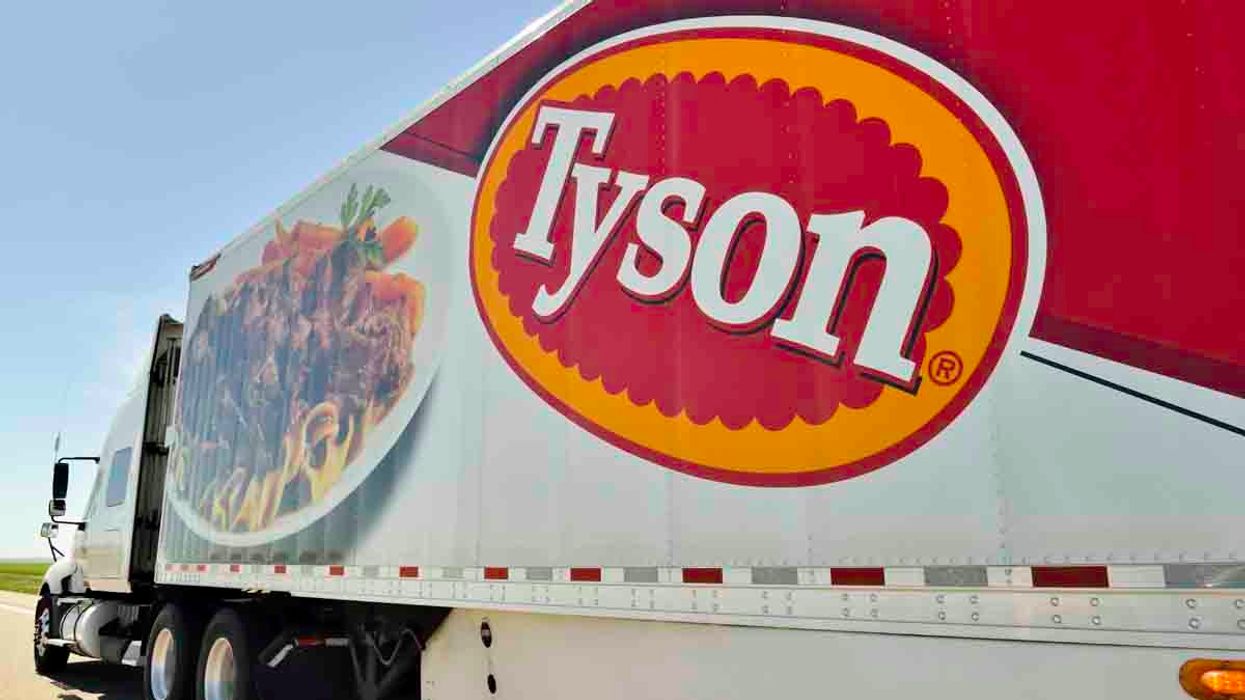
RiverNorthPhotography/Getty Images

Good implications?
An indoor meatpacking facility with poor ventilation, freezing temperatures, loud industrial machinery, many workers in close quarters for extended periods of time, and terrible sanitation. It's like the Garden of Eden for a virus like SARS-CoV-2. These locations have some of the highest infection rates in the country. Yet despite the panic over the number of cases, there are relatively few deaths. This actually bodes well for the general population that will have to achieve herd immunity at a slower, more controlled pace – no matter what the politicians do.
Since March, 148 meatpacking workers have reportedly died of COVID-19. That sounds like a high number, and there certainly have been scary headlines and lawsuits over the pandemic crisis in slaughterhouses, but it actually demonstrates the relatively low death rate of this virus.
According to the Food and Environment Reporting Network, as of July 16, 35,387 meatpacking workers have tested positive for the virus. So what is the infection fatality rate (IFR)? We don't know for sure, but here are some important data observations.
We know the case fatality rate (CFR) – that is the rate of death as a share of the known positive cases. Simple arithmetic shows it's 0.42%. Those are the known cases. How many more have had the virus but have not been detected through mass testing? According to CDC Director Robert Redfield, on average, across the nation, the number of people who had the virus, particularly asymptomatically, is 10 times higher than the number of confirmed cases. The results of some state antibody tests have implied even higher numbers.
Now, obviously, we cannot suggest that in the case of meatpackers, there are ten times more infections than confirmed cases, which would yield an implied IFR of just 0.042%, because there are only 140,000 meatpacking workers in the industry. They have already tested the facilities much more than the general population and have confirmed positive cases in 24% of the workforce. However, given that almost all of the positive cases were asymptomatic and they didn't begin mass testing until well into the peak of the virus, it's very likely that many of the people who had it early on but never presented with symptoms recovered and were no longer detectable by the time they conducted mass PCR testing of entire facilities.
For example, on May 5, the Des Moines Register reported that in Iowa, four meatpacking plants tested every worker and the infection rate was 58%, 39%, 26%, and 17% respectively. That means that even a snapshot of testing (which, absent an antibody test, doesn't confirm who already had it but has since recovered) often netted really high infection rates – higher than the 24% known average positivity rate.
Remember, while many believe that only a small percentage need to get infected in order to achieve herd immunity, this doesn't necessarily apply in a confined space like a meat-packing plant, especially where the inherent partial immunity might not block the virus completely but will ward of the symptoms. Thus, given the rate of identified asymptomatic positives, it's inconceivable that there is not an unknown, but not insignificant number of other asymptomatic infections among these workers that has not been documented.
Accordingly, it's very likely that the number of workers infected could be as much as two times the known amount, if not more. That would place the IFR more in line with 0.2%.
This is a microcosm of what the world would look like if we immediately exposed an entire state or country to the virus. The overwhelming majority are asymptomatic or mildly symptomatic, very few hospitalized, and possibly 0.2% or so died. Anecdotally, most of the cases reported in the media are of people with underlying conditions like heart conditions and diabetes.
In June, for example, when Tyson Foods tested its facilities in Arkansas, 95% of all those who turned up a positive test presented no symptoms. That demonstrates that the population of those who had the virus since perhaps before March is really much larger.
There are two other factors that likely skew the meatpacking numbers more negatively than the generation population. Some scientists have theorized that there might be a higher viral load transfer in confined and poorly ventilated areas because there is less air to diffuse the infected aerosols. Also, because meatpacking plants are very loud, workers often have to shout to be heard, thereby using the deeper recesses of the longs to spread aerosols. If you are going to see a higher percentage of serious cases, it would be in this sort of the environment, and yet the death rate is still low, which, again, bodes well for the general population.
Moreover, 87% of meatpacking workers are non-white. Most of them are Hispanic or of African descent, often refugees from Somalia, Sudan, and Congo. According to the CDC, Hispanics are four times more likely to be hospitalized from COVID-19 than white people, and black people are more than five times more likely. So the fact that hospitalizations and deaths appear to be relatively low as a percentage of cases, even among these workers in these conditions, clearly shows that not nearly as many people will die before the virus burns out as the doomsayers predicted. Even in this hard-hit subset of the population, just 0.001% of workers have died.